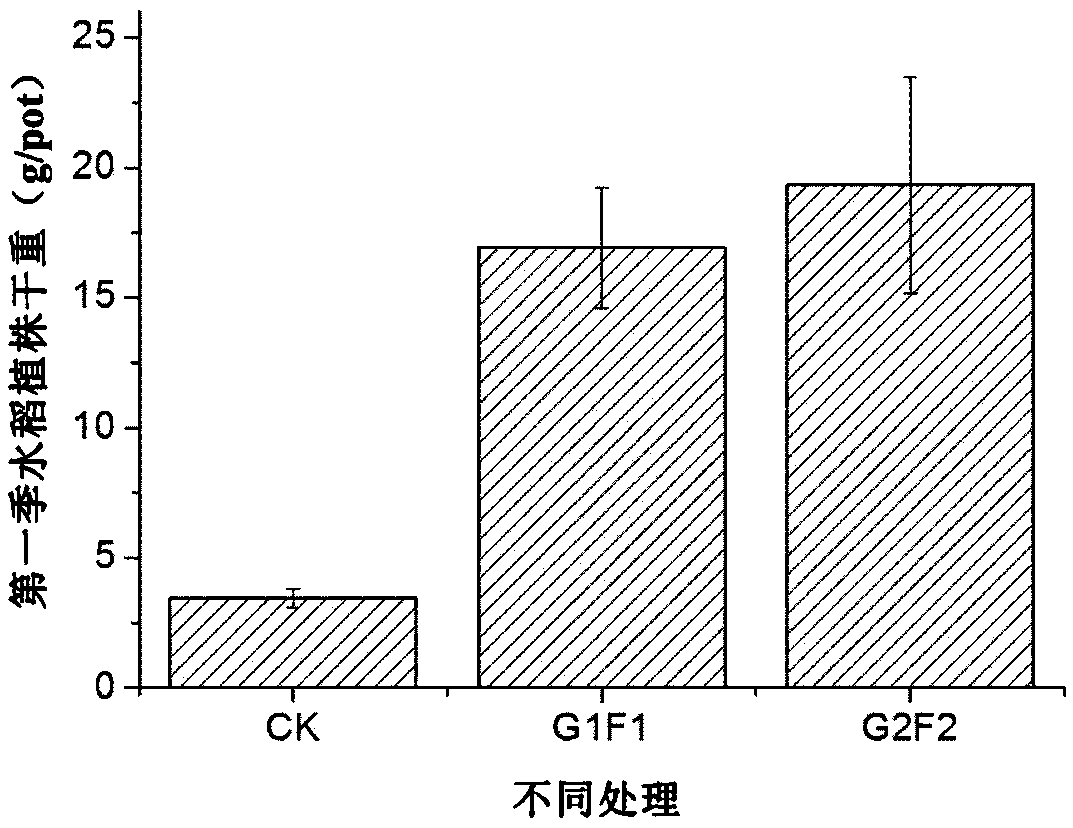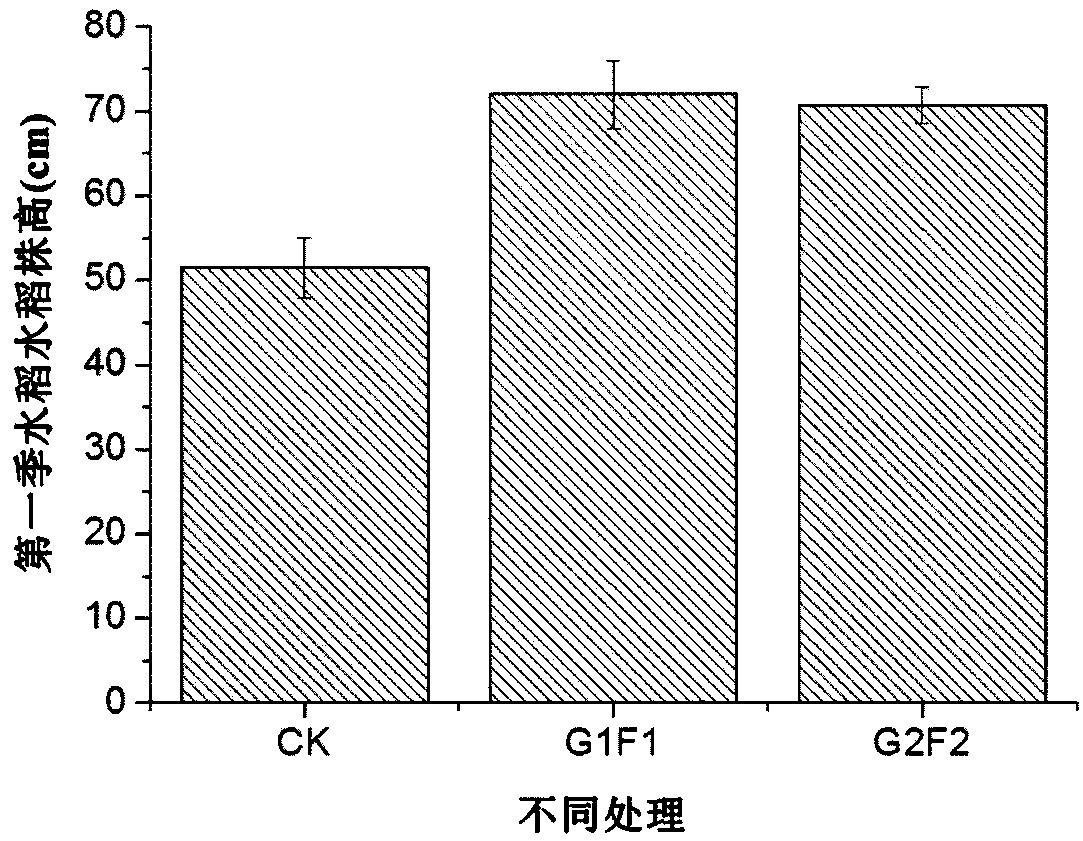Method for inhibiting rice from absorbing arsenic and cadmium by using gypsum composite
A compound and gypsum technology, applied in the field of soil remediation, can solve the problems of high cost of physical remediation methods, inapplicability of large-area polluted soil, and affecting large-area rice planting, etc., to achieve stable effect, easy access, and good growth
- Summary
- Abstract
- Description
- Claims
- Application Information
AI Technical Summary
Problems solved by technology
Method used
Image
Examples
Embodiment
[0027] The method of utilizing gypsum compound of the present invention to inhibit rice from absorbing arsenic and cadmium comprises the following steps:
[0028] 1) The first season of rice: First, add 0.15% of gypsum compound (G1F1) and 0.30% of Gypsum composite (G2F2), after fully mixing it with paddy soil, add an equal amount of deionized water to each treatment until the soil is flooded by about 3cm, and after 48 hours of stability, transplant rice seedlings Xiushui 03 (a variety with low accumulation of arsenic and cadmium ), the rice was flooded with water about 3cm before the rice was filled, no base fertilizer was added before rice planting, 0.16g / kg of urea and 0.08g / kg of potassium dihydrogen phosphate were applied to the tillering fertilizer, and 0.12g / kg of urea and 0.08g / kg of potassium dihydrogen phosphate were applied to the booting fertilizer. Potassium hydrogen 0.06g / kg. At the same time, the treatment without gypsum compound is set as the control group (CK)...
PUM
 Login to View More
Login to View More Abstract
Description
Claims
Application Information
 Login to View More
Login to View More - R&D
- Intellectual Property
- Life Sciences
- Materials
- Tech Scout
- Unparalleled Data Quality
- Higher Quality Content
- 60% Fewer Hallucinations
Browse by: Latest US Patents, China's latest patents, Technical Efficacy Thesaurus, Application Domain, Technology Topic, Popular Technical Reports.
© 2025 PatSnap. All rights reserved.Legal|Privacy policy|Modern Slavery Act Transparency Statement|Sitemap|About US| Contact US: help@patsnap.com



